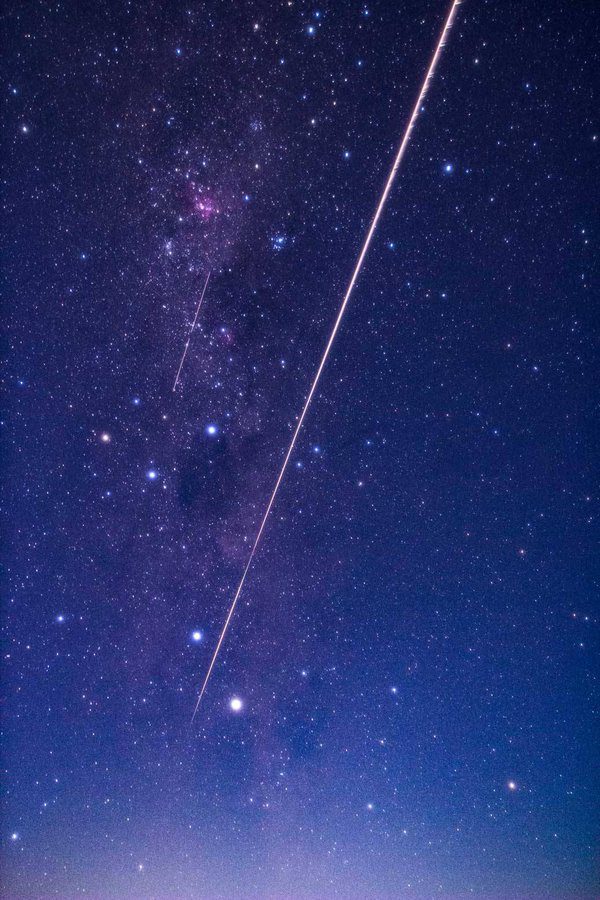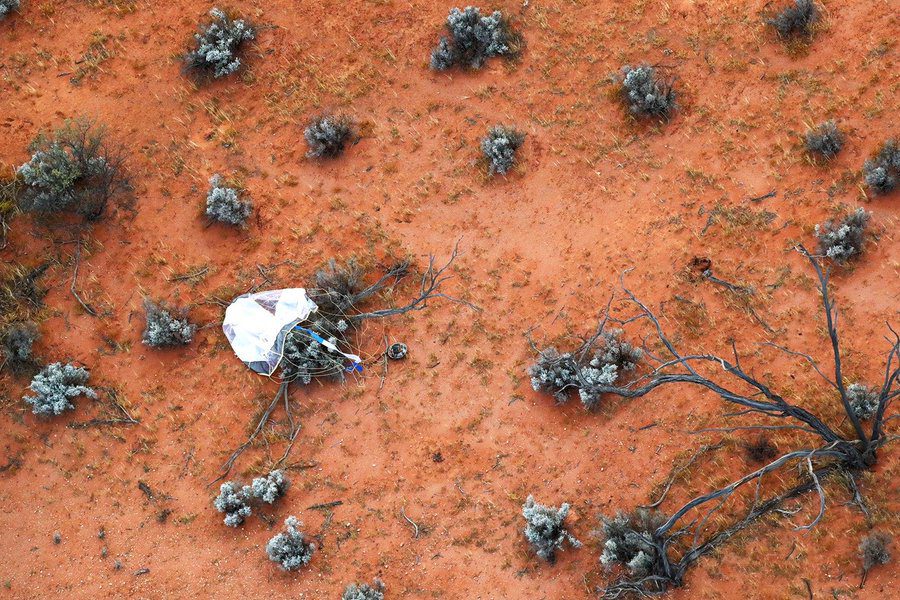The Japanese Hayabusa-2 mission gave JAXA a laudable success when it returned to Earth with its asteroid samples safely on board the return capsule on 5 December. Having made trajectory corrections, the Hayabusa-2 spacecraft entered the Earth’s gravitational field at 2254 GMT on 1 December. The return capsule was then ejected at 0530 GMT on 5 December to allow it to re-enter and land in Australia. The carrier spacecraft then made three burns to send it into a heliocentric orbit on its way to visit the minor planet 2001 CC21 in 2026 and the minor planet 1998 JY26 in 2031.
The return capsule, which was carrying rock samples from an asteroid, struck the Earth’s atmosphere at the super-orbital speed of 11 km per second at an atmospheric entry angle of minus 12 degrees at 1728 GMT on 5 December. The re-entry was viewed by observers on the ground as a streaking fireball. Having slowed itself down, the backshell and aeroshell were ejected and the capsule was parachuted to a safe landing in the Woomera range in South Australia, where it was safely recovered by scientists.

The re-entering Huyabusa 2 sample return capsule streaks across the sky over Australia. Courtesy: JAXA
JAXA’s Hayabusa-2 spacecraft was originally launched in December 2014 with the aim of reaching the asteroid 162173 Ryugu. It employed Earth flybys and electric ion thrusters in 2018 and returned to Earth at end of 2020.
Having dropped off Minerva II-1A and -1B rovers on 21 September 2018 and the Mascot lander on 3 October 2018, the Hayabusa 2 spacecraft made its own landing on 21 February 2019. The harpoon system managed to recover some rock material from the asteroid. It is these samples that have been returned to Earth for further study. Later the spacecraft fired a Small Carry-On Impactor (SCI) explosive device into the asteroid to create a new crater on 5 April 2019. It made a second brief landing on 11 July 2019 and later dropped off the MINERVA II-2 Rover before starting its return journey to Earth on 13 November 2019, this time with the craft’s more powerful chemical thrusters.
Comment by David Todd: A magnificently successful mission. Our congratulations to JAXA.
Jonathan McDowell contributed to this story

The Huyabusa 2 sample return capsule (right) and parachute (left) were found on the desert floor of the Woomera range. Courtesy: JAXA
Jonathan McDowell contributed to this story






